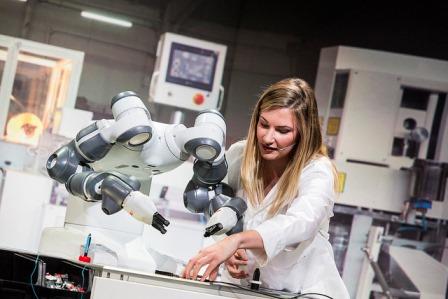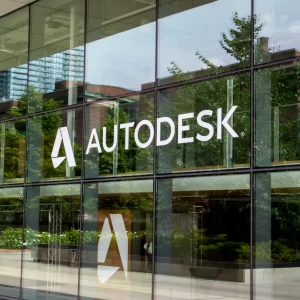
Swiss engineering giant ABB recently demonstrated YuMi, a fixed robot designed to appear humanoid. It doesn’t walk or move about.
At a recent Salesforce conference in London in a demonstration designed to show how cuddly and friendly YuMi was, the young woman (pictured above) standing next to the machine made an instinctive involuntary flinch when the machine’s arm suddenly moved its arm. The woman recovered well and continued with the demo however it was a small but noticeable reaction.
Robots that mimic humans accurately remain on the drawing board or in the imagination of silver screen script writers – no Ex-Machina AI or I,Robot machines are roaming the streets yet. At least as far as we know.
Recent surveys claimed 25% of respondents feared losing their jobs to robots in the next ten years. There is clearly some hysteria in play here.
So why build a humanoid robot? Recent reports say Japan is rapidly developing robots to care for the elderly offering care, monitoring, mobility assistance and bio assistance to restricted individuals.
In Europe a humanoid robot called Nadine is currently freaking out Guardian readers with its horror mask face. See Guardian article | here.
In fact the Guardian is on a bit of a charge with its recent robot coverage with the spurious notion that robotic care for the elderly will stop us being human and er, caring.
Humanoid robots for business will come. But as with most technology they will appear in unlikely places and have unusual applications.
There are social questions to be answered about the development of robots and humanoid robots in particular but ignoring the potential benefits of humanoid robots will leave us poorer even if we must first get over our primal fears.
We like our machines to be predictable and the more humanoid robots start to appear, the more predictable we want them to be.






